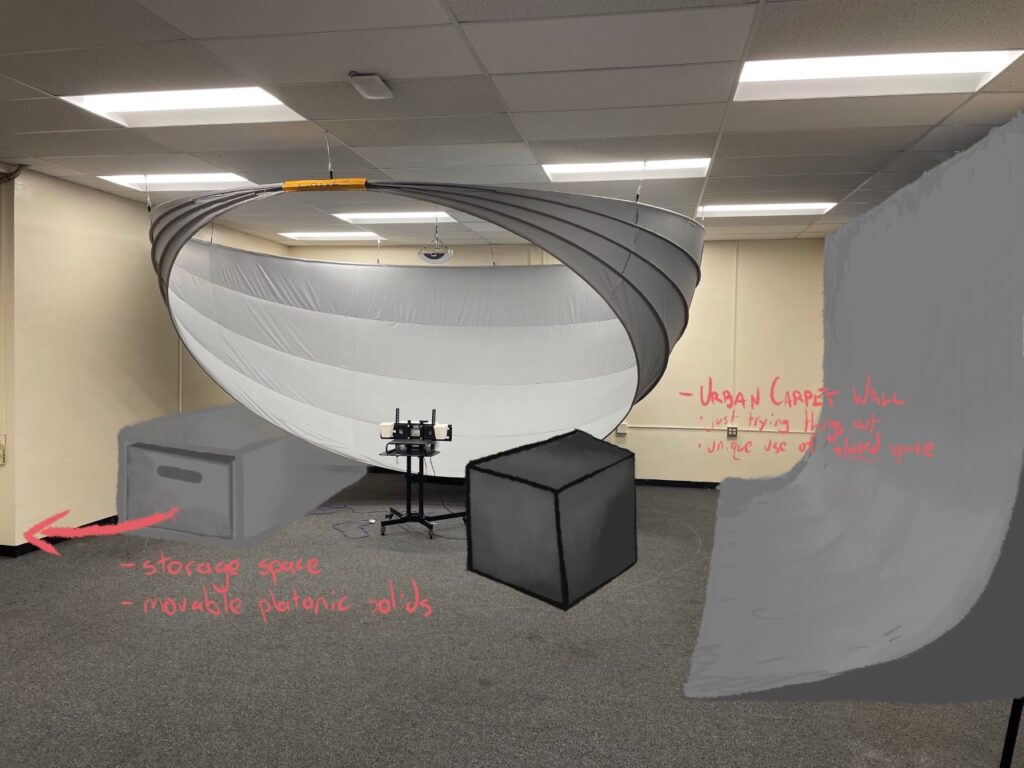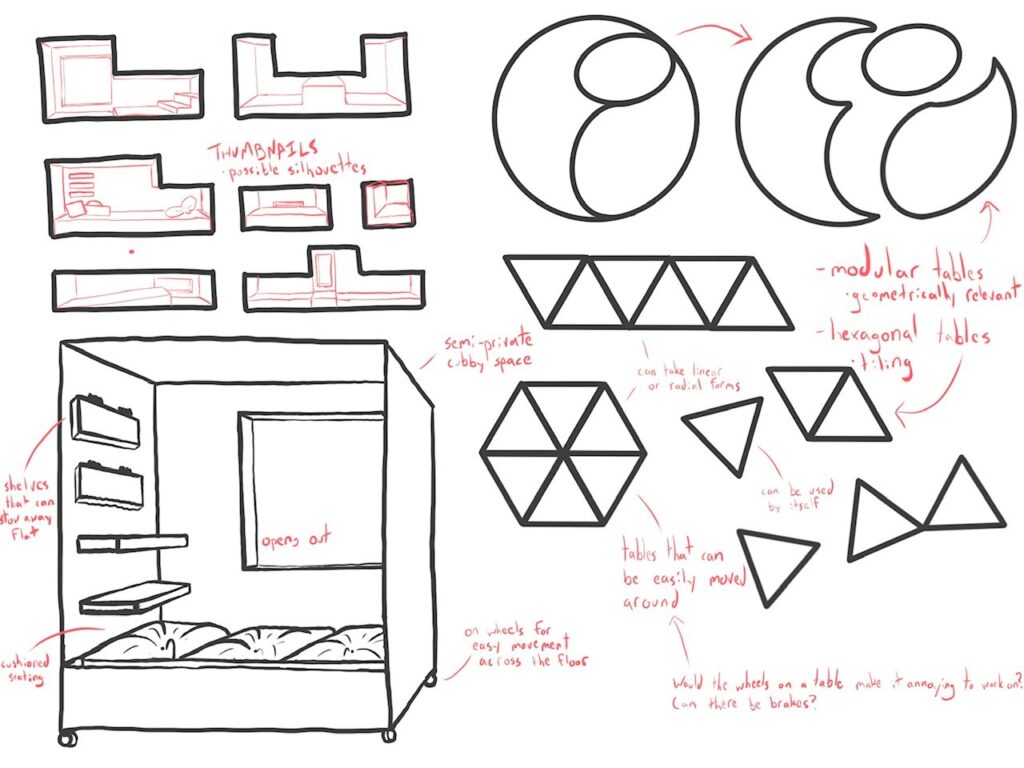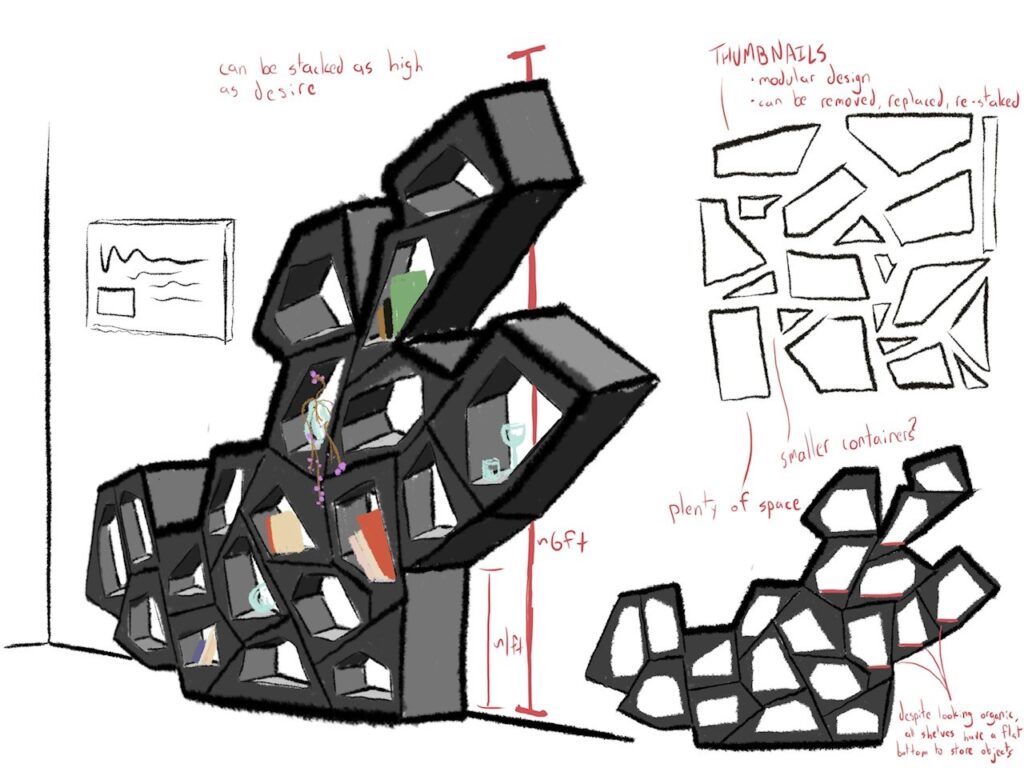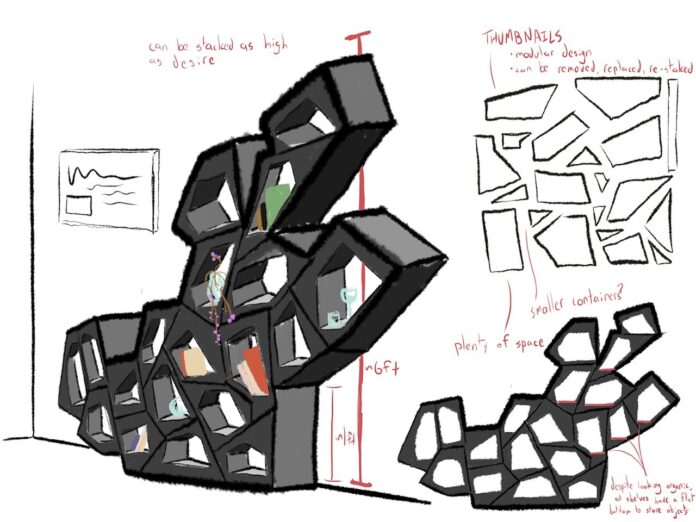
Shapes in Space
Using a more artistic approach to designs around the HYVE-3D system, a more sculptural solution may be effective in fostering creativity and functionality. By emphasizing play and disincentivizing stagnation (sitting still, standing around, etc.) the collaborative nature of the space is brought to the forefront of it’s use. Platonic solids that can be moved within the space echo the feeling of a playground, but not feeling so childish as to deter older users. Not only this, but more complex shapes like slopes, ramps, and spheres can take inspiration from real-world examples (i.e. the right fixture in this mock-up, inspired by the late Zaha Hadid’s Urban Carpet from Cincinnati’s Lois and Richard Rosenthal Center for Contemporary Art) The simple shapes can also be a method of storage.
Modular Implementation

To help facilitate an easy transition of space, modular furniture may be a solution. Only using what one needs when they need it, cluttering the space becomes minimal (or a fault of the person setting up), and individuals or groups can only use what they need – each according to their own. More or less may be utilized at one time to accommodate a variety of sizes of groups. Small-to-medium-sized pods on rollers could move freely around the space, giving freedom to transform the space to whomever its using it at the time. The simple-to-move designs would allow for easy cleanup and maintenance. However, with furniture remaining modular and piece-wise, where may they themselves be stored, and is a room full of pieces of furniture worth anything?





